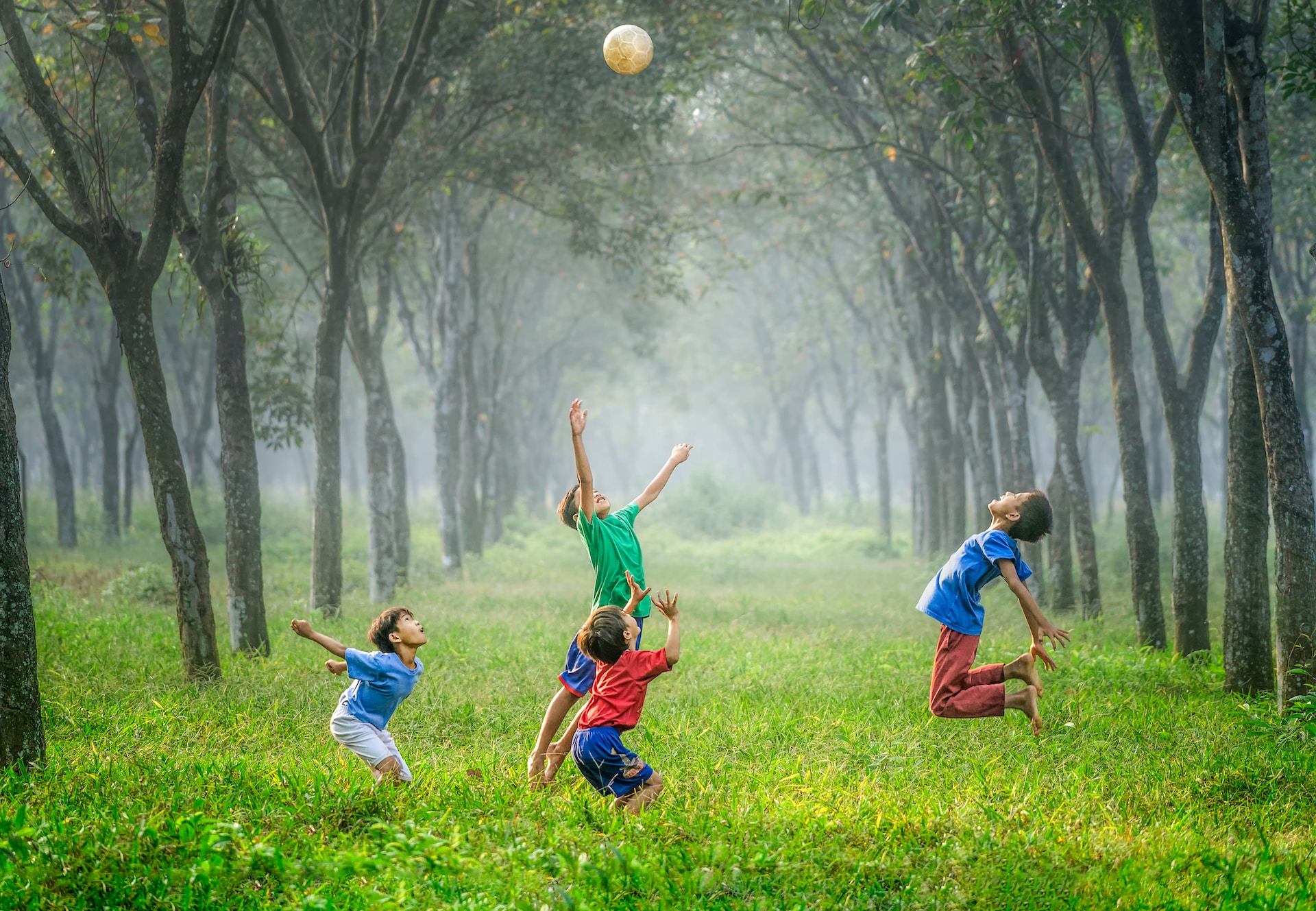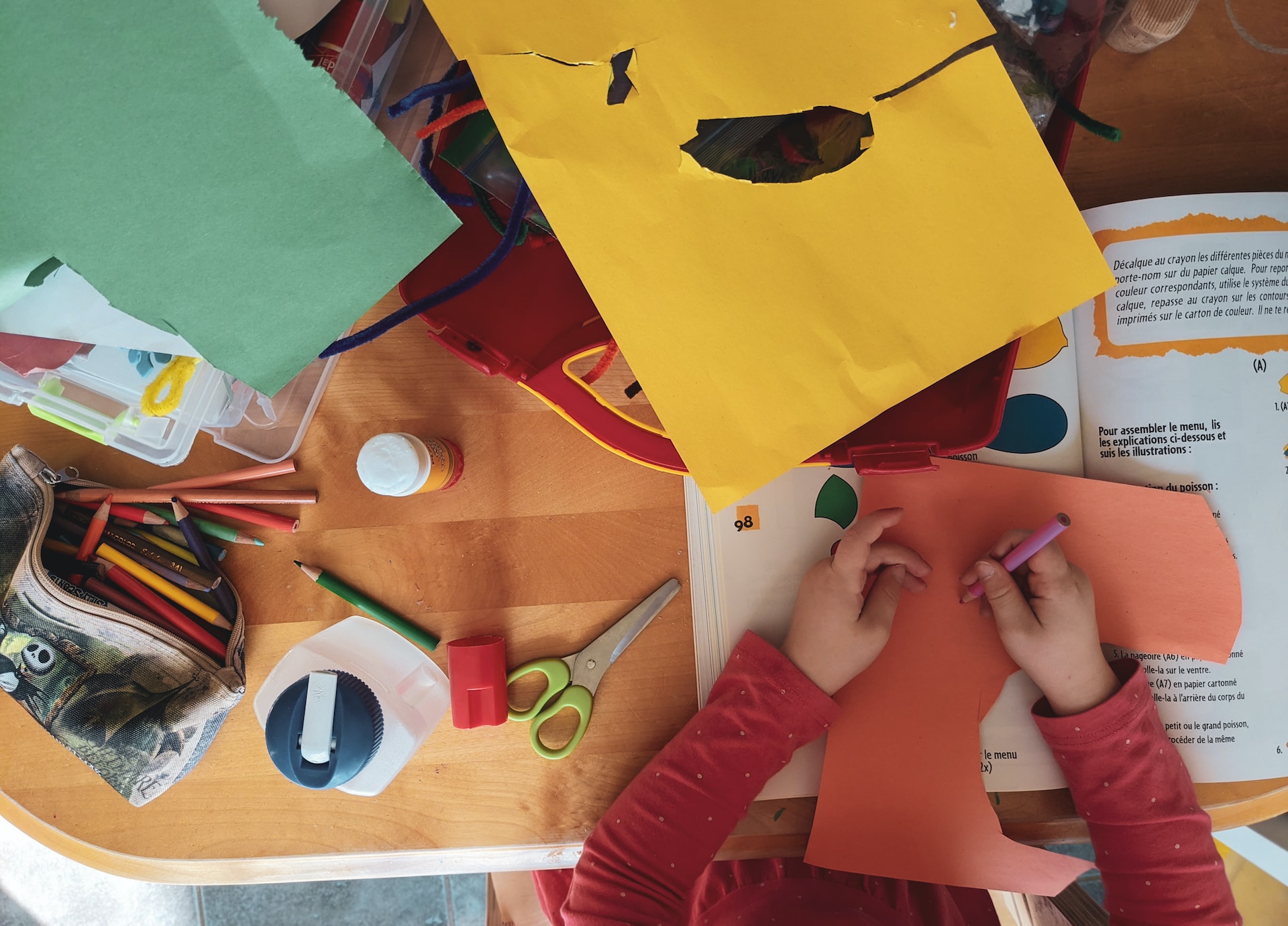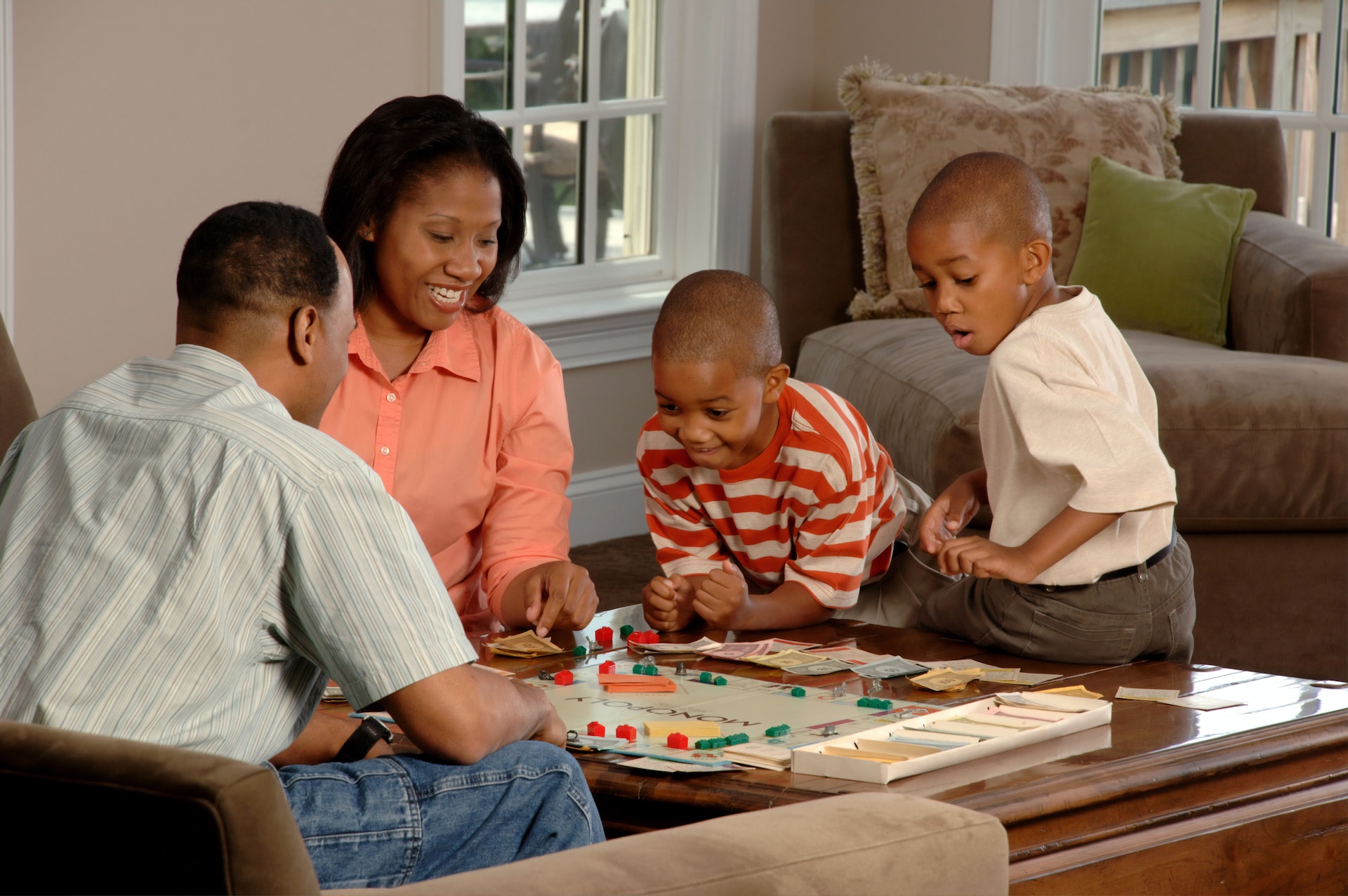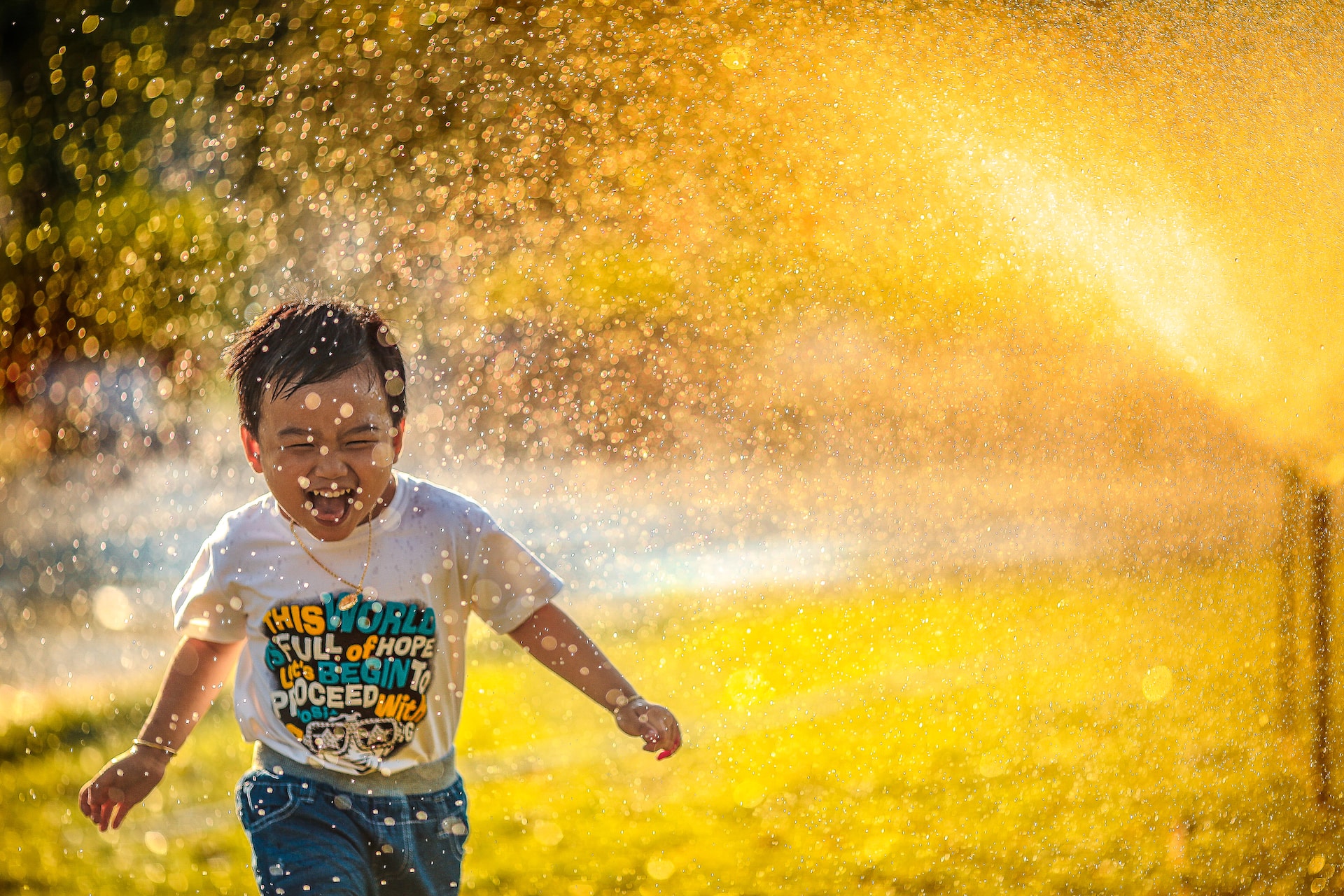Unleash the Fun:
60 Creative Ways to Keep Kids Entertained This Summer
Unleash the Fun:
60 Creative Ways to Keep Kids Entertained This Summer
Summer break is a time of endless possibilities and boundless energy for kids. It’s the perfect opportunity to explore new activities, nurture their creativity, and make unforgettable memories. If you’re looking for ways to keep your kids entertained and engaged during the summer months, we’ve got you covered! Here are 60 creative ideas that will unleash the fun and ensure your kids have a summer they’ll cherish.

Outdoor Activities
1) Obstacle Course
Build a backyard obstacle course using hula hoops, cones, and jump ropes. Design a challenging course that includes crawling under obstacles, jumping over hurdles, and balancing on beams. Time each other for added excitement and friendly competition. Encourage kids to test their physical abilities and problem-solving skills as they navigate through the course.
2) Backyard Camping Area
Set up a camping area in your backyard complete with a tent, sleeping bags, and stargazing. Transform your backyard into a cozy camping spot where kids can experience the joy of sleeping outdoors. Teach them camping skills like setting up a tent, starting a campfire (safely), and identifying constellations in the night sky. Share stories, play camping games, and create lasting memories under the stars.
3) Scavenger Hunt
Organize a neighborhood scavenger hunt, complete with clues and hidden treasures. Create a list of items or clues for kids to find around the neighborhood. Include fun challenges and small prizes to make it even more exciting. Encourage teamwork, problem-solving, and exploration as they search for hidden treasures. This activity promotes critical thinking, cooperation, and outdoor exploration.
4) Water Balloon
Have a water balloon fight or create a DIY water balloon pinata for added excitement. Fill water balloons and have an epic water balloon fight in the backyard. Create boundaries and rules for safe play. Alternatively, hang a water balloon pinata from a tree branch and take turns trying to break it open, drenching everyone in a refreshing spray of water.
5) Nature Hike
Plan a nature hike and encourage kids to collect leaves, rocks, and other interesting finds along the way. Choose a local trail or park and embark on a nature hike. Teach kids about different plants, trees, and animals they encounter. Encourage them to collect natural items like leaves, rocks, and feathers to create a nature-inspired art project later. This activity fosters an appreciation for the environment and encourages curiosity about the natural world.
6) DIY Miniature Golf
Create a miniature golf course using household items and challenge the family to a friendly competition. Utilize cardboard, plastic cups, and other household objects to design a mini-golf course in your backyard. Set up different holes with unique challenges and keep score as you play. This activity enhances hand-eye coordination, patience, and creativity while providing fun for the whole family.
7) DIY Movie Theater
Set up a DIY outdoor movie theater by hanging a white sheet and using a projector for family movie nights under the stars. Hang a white sheet between two trees or against a wall and project movies onto it using a portable projector. Arrange cozy seating with blankets, pillows, and popcorn for a magical outdoor movie experience. Enjoy favorite films together while basking in the beauty of the night sky.
8) Picnic
Organize a picnic in the park, complete with sandwiches, fruits, and outdoor games. Pack a delicious picnic lunch and head to a local park or scenic outdoor spot. Spread out a blanket, enjoy the food, and engage in classic outdoor games like frisbee or catch. Take a break from technology and soak in the beauty of nature while bonding with family and friends.
9) Sports Day
Arrange a backyard sports day with various games like soccer, basketball, and relay races. Set up stations for different sports activities in the backyard. Divide into teams and engage in friendly competition with games like soccer, basketball, relay races, or even an obstacle course. Encourage physical activity, teamwork, and healthy competition while having loads of fun together.
10) Bird Feeder
Create a DIY bird feeder and observe different bird species that visit your backyard. Make a bird feeder using a plastic bottle, string, and birdseed. Hang it in your backyard and observe the different bird species that come to visit. Encourage kids to observe and identify the birds, noting their colors, sizes, and behaviors. Provide them with a field guide or use online resources to learn more about each bird species. Discuss the importance of birds in the ecosystem and how we can help protect their habitats. This activity fosters an appreciation for wildlife and connects children with the natural world around them.
Creative Crafts and DIY Projects
11) Tie-Dye
Have a DIY tie-dye day where kids can create vibrant and unique designs on t-shirts, socks, or pillowcases. Gather plain white t-shirts, socks, or pillowcases and prepare different colored dyes. Show kids different tie-dye techniques like crumpling, folding, or twisting the fabric to create interesting patterns. Let their creativity run wild as they apply the dyes and create their own colorful and one-of-a-kind designs. Once the items are dry, they can proudly wear or use their tie-dye creations.

12) Scrapbook
Start a summer scrapbook where kids can document their adventures, paste pictures, and write about their experiences. Provide each child with a scrapbook or journal and encourage them to document their summer activities. They can write about their experiences, paste pictures, and decorate the pages with drawings, stickers, or mementos like pressed flowers or concert tickets. This activity allows them to reflect on their summer memories and create a personalized keepsake to cherish for years to come.
13) Create a Fort
Encourage kids to build their own cardboard fort or castle using recycled materials. Collect cardboard boxes, tubes, and other recyclable materials and let kids unleash their creativity by constructing their own forts or castles. They can design and decorate their structures, creating secret hideaways or imaginary kingdoms. This activity promotes problem-solving, teamwork, and imaginative play as they transform simple materials into their own magical world.
14) Art Gallery
Create a family art gallery by displaying kids’ artwork in frames around the house. Dedicate a wall or hallway in your home as a family art gallery. Frame and hang your kids’ artwork, allowing them to showcase their creativity and talent. Encourage them to create new artwork throughout the summer and regularly update the gallery. This not only boosts their self-esteem and pride in their work but also inspires them to explore different artistic techniques and styles.
15) Jewelry Making
Set up a DIY jewelry-making station using beads, strings, and other craft supplies. Provide a variety of beads, strings, and jewelry-making tools like pliers and clasps. Kids can create their own necklaces, bracelets, or even keychains, exploring their artistic abilities and expressing their personal style. Encourage them to experiment with different bead patterns, colors, and textures. This activity enhances fine motor skills, hand-eye coordination, and encourages self-expression through wearable art. They can even gift their creations to family and friends as a token of their creativity and love.
16) Green Thumb
Foster their green thumb by starting a mini herb or vegetable garden in the backyard. Allocate a small section of your backyard for a mini garden. Help kids choose herbs or vegetables they would like to grow, such as basil, tomatoes, or carrots, and guide them through the process of planting, watering, and caring for the plants. Teach them about soil preparation, sunlight requirements, and the importance of regular maintenance. They will enjoy watching their garden flourish as they witness the growth of their plants over time. Encourage them to harvest their own fresh produce and use it in family meals, instilling a sense of pride and connection to nature.
17) Fashion Show
Host a DIY fashion show where kids can design and model their own outfits using old clothes and accessories. Gather a collection of old clothes, scarves, hats, and accessories from your wardrobe or thrift stores. Let kids mix and match and get creative with their outfits, creating unique and stylish looks. Encourage them to express themselves through fashion and build their confidence as they strut their stuff on the “runway.” Take pictures or record videos of their fashion show to capture their creativity and showcase their talent.
18) Origami
Teach kids basic origami techniques and let them create paper animals or flowers. Introduce kids to the art of origami by teaching them how to fold paper into various shapes, such as animals, flowers, or geometric figures. Start with simple projects like paper airplanes or fortune tellers and gradually progress to more intricate designs. Provide origami paper in different colors and patterns, and guide them through different projects, allowing their creativity and problem-solving skills to flourish. Display their origami creations around the house to admire their artistic abilities.
19) Playdough
Create homemade playdough using simple ingredients and let their imagination run wild. Make playdough from scratch using flour, salt, water, and food coloring. Kids can enjoy the process of measuring and mixing the ingredients, witnessing the transformation from a liquid to a pliable dough. Once the playdough is ready, encourage them to use their imagination to shape and mold it into different creations like animals, food items, or imaginative characters. Provide them with tools like rolling pins, cookie cutters, and plastic utensils to enhance their playdough experience. This sensory activity enhances fine motor skills, creativity, and imagination.
20) Science Experiments
Engage in DIY science experiments such as erupting volcanoes, making slime, or growing crystals. Explore the world of science through fun and interactive experiments. Create a baking soda and vinegar volcano by building a volcano structure and combining the two ingredients to observe the chemical reaction. Make slime using glue, water, and borax, experimenting with different colors and textures. Grow crystals using household items like salt or sugar and observe their formation over time. Encourage kids to ask questions, make predictions, and record their observations during these experiments. This hands-on approach to science sparks curiosity and nurtures their scientific thinking skills.
21) DIY Science Fair
Organize a DIY science fair where kids can conduct experiments and showcase their findings to family and friends. Help kids plan and conduct their own science experiments, whether it’s testing the effectiveness of different cleaning solutions or exploring the growth of plants under different conditions. They can create visual displays, write up their hypotheses and results, and explain their projects to others. Encourage them to present their work confidently, fostering their communication and presentation skills.
22) Mad Scientist
Create a DIY “mad scientist” lab where kids can perform wacky experiments using household materials. Set up a designated area with safety goggles, beakers, test tubes, and other science equipment (or makeshift alternatives). Let kids conduct fun experiments like creating slime, making a volcano erupt with baking soda and vinegar, or exploring the power of static electricity with balloons. Encourage their curiosity and scientific inquiry, and emphasize the importance of safety precautions.
Indoor Fun
23) Game Night
Organize a family game night with classic board games, card games, or puzzles. Gather your favorite games, from Monopoly to Scrabble to Jenga, and spend an evening of laughter and friendly competition. Take turns choosing games, and let everyone participate. It’s a great way to bond as a family, stimulate critical thinking, and create lasting memories.

24) Karaoke
Have a family karaoke session where everyone can sing their favorite songs and create joyful memories. Set up a karaoke machine or use a karaoke app on your device. Choose a variety of songs that appeal to different family members’ tastes and take turns belting out tunes. Encourage everyone to let loose, showcase their singing skills (or lack thereof), and create a lively and entertaining atmosphere.
25) Indoor Camping
Set up an indoor camping adventure with tents, sleeping bags, and storytelling. On a rainy day or for a change of pace, create an indoor camping experience. Set up tents or build forts using blankets and pillows. Bring out the sleeping bags, cozy up with flashlights, and tell spooky or funny stories. Enjoy the camping atmosphere indoors while creating a sense of adventure and togetherness.
26) Baking Day
Host a baking day where kids can help prepare and decorate cookies, cupcakes, or their favorite treats. Spend a day in the kitchen baking delicious treats with your kids. Let them help measure ingredients, mix the batter, and decorate the goodies with frosting, sprinkles, or icing. Whether it’s chocolate chip cookies, homemade pizza, or personalized cupcakes, the process of baking together encourages teamwork, creativity, and the joy of sharing delicious treats.
27) Reading
Create a cozy reading nook with pillows, blankets, and a collection of books for a quiet reading escape. Set up a designated reading area in your home where kids can retreat with their favorite books. Arrange plush pillows, soft blankets, and a shelf or basket filled with books within their reach. Encourage them to immerse themselves in captivating stories, explore new worlds, and let their imagination soar.
28) Cooking Competition
Plan a family-friendly cooking competition where each member can showcase their culinary skills. Divide into teams or compete individually in a friendly cooking competition. Assign a theme or a specific dish to prepare, such as pizza, cupcakes, or a three-course meal. Provide ingredients and let each family member showcase their culinary skills and creativity. Have fun tasting and judging the dishes based on presentation, taste, and originality.
29) Movie Marathon
Have a “movie marathon” day where you watch a series of your favorite movies or have a movie theme with snacks and decorations. Choose a series of movies that the family loves or have a movie theme for the day, such as superheroes or animated films. Set up a cozy viewing area with comfortable seating, blankets, and pillows. Prepare an assortment of movie snacks like popcorn, nachos, or homemade treats. Enhance the atmosphere by decorating the space with movie-themed decorations and posters.
30) Photo Booth
Set up a DIY photo booth with props and costumes for hilarious and memorable photos. Create a dedicated space for a photo booth experience. Hang a backdrop, set up proper lighting, and provide a variety of props, costumes, and accessories like hats, glasses, and silly masks. Let kids and family members take turns striking poses and capturing fun and memorable moments. Encourage creativity and allow them to express their personalities through the photos.
31) Talent Show
Organize a family talent show where each member can showcase their unique skills and talents. Set aside an evening for a family talent show. Encourage everyone in the family to prepare and showcase their talents, whether it’s singing, dancing, playing an instrument, reciting poetry, doing magic tricks, or even performing a stand-up comedy routine. Provide a stage area, props, and a supportive audience. Applaud each participant’s efforts and celebrate everyone’s unique abilities.
32) Spa Day
Create a DIY “spa day” at home with homemade facemasks, foot soaks, and relaxation activities. Transform your home into a serene spa environment. Prepare homemade facemasks using natural ingredients like avocado, honey, or yogurt. Set up foot soaks with warm water and aromatic oils. Create a relaxing atmosphere with soft music, scented candles, and dim lighting. Encourage everyone to unwind and enjoy a day of pampering and self-care. You can take turns giving each other gentle massages or even offer soothing hand or foot massages. It’s a rejuvenating experience that promotes relaxation and well-being for the whole family.
Exploring Creativity
33) Painting
Set up a painting party with canvases, paint, and brushes, and let kids unleash their creativity through colorful artwork. Create an art studio atmosphere at home by providing canvases, a variety of paints, brushes, and smocks. Encourage kids to experiment with different painting techniques, mix colors, and express their emotions through art. You can also introduce them to famous artists and art styles for inspiration. Display their finished artwork around the house or even have a mini art exhibition where each family member can discuss their artistic choices and interpretations.

34) Music
Teach kids the basics of music by introducing them to different musical instruments or encouraging them to learn to play an instrument they’re interested in. Start by showcasing various musical instruments, such as a keyboard, guitar, drums, or violin. Allow kids to explore the sounds and textures of each instrument. If they show interest in a particular instrument, consider enrolling them in music lessons or finding online tutorials for beginners. Help them learn the basics, such as reading sheet music or understanding rhythm. Encourage regular practice and provide opportunities for them to showcase their newfound musical skills, whether it’s through impromptu performances for the family or participating in local talent shows.
35) Storytelling
Host a storytelling session where kids can create their own imaginative stories and share them with the family. Set aside dedicated time for a storytelling session, where each family member takes turns sharing imaginative stories they’ve created. Encourage kids to use their creativity and storytelling skills to invent engaging narratives. Provide prompts or themes to inspire their storytelling adventures. You can also enhance the experience by incorporating props, costumes, or even using a storytelling app that provides sound effects. This activity not only sparks imagination but also promotes communication, language development, and listening skills.
36) Comic Books
Encourage kids to write and illustrate their own comic books, allowing them to explore their storytelling and artistic skills. Provide blank comic book templates or sheets of paper for kids to create their own comic books. Guide them through the process of developing characters, designing captivating illustrations, and crafting compelling storylines. Encourage their creativity by allowing them to experiment with different genres, styles, and narrative techniques. Once their comic books are complete, encourage them to share their creations with the family or even host a mini comic book convention where everyone can showcase their work.
37) Skits
Foster their love for theater by organizing a play or skit at home, complete with costumes and props. Help kids create scripts or adapt existing stories into skits. Encourage them to explore different genres, such as comedy, drama, or even musical theater. Provide costumes, props, and a designated performance space where they can rehearse and bring their characters to life. Invite family and friends to watch their performances, and consider recording the skits to create lasting memories. This activity boosts creativity, teamwork, self-expression, and stage confidence in a fun and imaginative way.
38) Art Project
Organize a family art project where everyone contributes to a collaborative piece of artwork. Start by selecting a theme or concept for the artwork, such as nature, dreams, or emotions. Choose a large canvas or poster board that can accommodate everyone’s contributions. Provide a variety of art supplies, including paints, markers, colored pencils, and collage materials. Each family member can take turns adding their unique touch to the artwork, whether it’s painting a background, drawing intricate details, or attaching collaged elements. Encourage open communication and collaboration throughout the process, allowing everyone’s ideas to come together harmoniously. Display the finished artwork prominently in your home as a testament to your family’s creativity and unity.
39) Escape Room
Create a DIY science-themed escape room where kids solve puzzles and riddles to unlock clues. Design a storyline that revolves around a scientific mystery or problem that needs to be solved. Set up different stations or rooms with puzzles, riddles, and challenges that require critical thinking, problem-solving, and teamwork. Incorporate scientific elements like decoding secret messages, conducting experiments, or solving equations. Provide a timer to add excitement and a sense of urgency. As the kids progress through the escape room, they will unlock clues that lead them closer to solving the ultimate mystery. Celebrate their success and problem-solving skills once they complete the escape room challenge.
40) Coding
Teach kids basic coding skills through interactive online platforms or coding games. There are numerous resources available that make learning coding fun and accessible for kids. Introduce them to block-based programming languages like Scratch or Blockly, which allow them to drag and drop code blocks to create animations, games, and interactive stories. Encourage them to experiment, problem-solve, and explore different coding concepts. As they gain confidence, they can move on to text-based programming languages like Python. Provide challenges or projects for them to work on, such as creating a simple game or designing a digital artwork. Celebrate their coding achievements and inspire them to continue exploring the world of programming.
41) Puppet Theater
Create a DIY puppet theater and let kids write and perform their own puppet shows. Help kids construct a puppet theater using a large cardboard box or curtain rods. They can design and decorate the theater with colorful fabrics, curtains, and props. Encourage them to create their own puppets using socks, felt, or paper bags, and provide art supplies for decorating the puppets. Assist them in writing scripts or storytelling for their puppet shows. Encourage their imagination and creativity as they bring their characters to life through puppetry. Once their shows are ready, they can perform for family and friends, complete with their own sound effects and stage presence.
42) Cooking Science
Host a DIY science-themed cooking session, where kids can explore the chemistry of food through fun recipes. Choose recipes that involve scientific principles, such as yeast-based bread, homemade butter, or baking soda and vinegar experiments. Explain the scientific concepts behind each recipe, such as fermentation, emulsification, or chemical reactions. Let the kids be actively involved in the cooking process, measuring ingredients, observing changes, and making predictions. Encourage them to ask questions and discuss the science behind each step. Once the dishes are ready, they can enjoy the delicious results of their culinary science experiments.
43) World Exploration
Host a “world exploration” day where kids learn about different countries, cultures, and traditions through activities and crafts. Select a few countries or cultures to focus on and provide resources like books, maps, and online materials that introduce their traditions, landmarks, and customs. Engage the kids in activities and crafts inspired by these cultures, such as creating traditional crafts, learning basic phrases in different languages, or preparing and sampling traditional foods. Encourage them to ask questions, explore cultural differences and similarities, and appreciate the diversity of our world. You can also incorporate games or quizzes to test their knowledge about different countries. For example, you could play a trivia game where they have to match famous landmarks with the countries they belong to. Create a passport for each child and “stamp” it whenever they learn something new or complete an activity related to a specific country. This will make the experience more interactive and exciting. By the end of the day, the kids will have gained a broader understanding of the world and its many fascinating cultures.
Engaging with Nature
44) Day Trip
Plan a day trip to a local museum, zoo, or botanical garden for a fun and educational experience. Research and select a destination that offers engaging exhibits, interactive displays, or educational programs suitable for kids. Museums often have sections dedicated to natural history, science, art, or technology, providing a diverse range of learning opportunities. Zoos allow kids to observe various animal species up close, learn about their habitats, and understand the importance of conservation. Botanical gardens provide a chance to explore different plants, their adaptations, and the role they play in the environment. While visiting, encourage kids to ask questions, participate in guided tours or workshops, and engage in hands-on activities offered by the venue. It’s a fantastic way to foster curiosity, expand knowledge, and create lasting memories.

45) Local Parks
Visit local parks or botanical gardens and let kids explore and learn about different plant species. Spend a day in nearby parks or botanical gardens that offer beautiful landscapes and diverse plant collections. Take a leisurely walk, and as you encounter various plants, share information about their names, characteristics, and ecological significance. Encourage kids to observe and appreciate the colors, textures, and scents of the plants. If the park has informational signs or guided tours, make use of those resources to enhance their learning experience. You can also bring a field guide or use plant identification apps to identify and learn about specific plant species. This activity provides an opportunity to instill a love for nature, develop observational skills, and broaden their understanding of the plant kingdom.
46) Bike Ride
Organize a family bike ride or hike in a scenic location to enjoy the outdoors and stay active. Choose a picturesque trail or path suitable for biking or hiking. Check local parks, nature reserves, or designated biking/hiking areas in your region. Ensure the chosen route is safe and appropriate for the skill levels of all family members. Before setting off, engage in a brief discussion about safety rules, proper biking techniques, or hiking etiquette. During the excursion, take breaks to appreciate the natural surroundings, pointing out interesting features, plants, or wildlife. Encourage kids to stay observant and ask questions about the environment. This activity promotes physical fitness, outdoor exploration, and a deeper connection with the natural world.
47) Bug Hunt
Go on a bug hunt and teach kids about different insects, their habitats, and their importance in the ecosystem. Explore the fascinating world of insects by organizing a bug hunt in your backyard, local park, or nature reserve. Provide kids with magnifying glasses, bug catchers, or observation jars to safely examine and study insects. Teach them about the different types of insects, such as beetles, butterflies, bees, ants, and spiders, and their ecological roles. Discuss the importance of insects for pollination, decomposition, and maintaining a balanced ecosystem. Encourage kids to carefully observe insects in their natural habitats, noting their behaviors, colors, and body structures. Emphasize the significance of respecting and protecting these small creatures and their habitats. After the bug hunt, have a discussion to share interesting findings, answer questions, and reinforce their understanding of insects’ ecological importance.
48) Butterfly Garden
Set up a DIY butterfly garden by planting flowers that attract butterflies and observe their beautiful presence. Create a dedicated space in your backyard or a suitable area where you can plant flowers that attract butterflies. Research which plants are favored by butterflies and choose a variety of nectar-rich flowers that bloom throughout the season. Examples include butterfly bushes, milkweed, coneflowers, and marigolds. Involve kids in the process of preparing the garden bed, planting the flowers, and watering and caring for them. Explain the life cycle of butterflies, from eggs to caterpillars, chrysalises, and adult butterflies.
49) Beach Trip
Take a trip to the beach or lake and engage in activities such as building sandcastles, collecting seashells, and playing beach volleyball. Plan a day of sun, sand, and water by visiting a nearby beach or lake. Pack beach essentials such as towels, sunscreen, snacks, and beach toys. Encourage kids to explore the shoreline, build sandcastles, and dig moats. Collect seashells of different shapes and sizes, observing their intricate details. Engage in friendly beach games like frisbee, beach volleyball, or soccer. Take breaks to cool off in the water and teach kids about water safety. Enjoy a beach picnic and savor the beautiful surroundings. This outing provides a chance to connect with nature, have fun in the sun, and create memorable experiences with the family.

50) Local Farm
Visit a local farm or petting zoo to interact with and learn about farm animals and exotic creatures. Research farms or petting zoos in your area that offer educational and interactive experiences for children. Plan a visit with the family and immerse yourselves in the farm environment. Kids can interact with various farm animals like cows, pigs, sheep, chickens, and goats. They can learn about their feeding habits, life cycles, and the importance of animal welfare. Some farms may even have exotic animals like alpacas, llamas, or emus, providing an opportunity to learn about unique species. Encourage kids to ask questions and engage in hands-on activities like feeding the animals or grooming them. It’s a great way to teach empathy, foster a connection with nature, and broaden their understanding of different creatures.
51) Nature Journal
Start a nature journal where kids can document their observations of plants, animals, and natural phenomena. Provide kids with a journal or notebook to serve as their nature journal. Encourage them to take it along on outdoor adventures, such as hikes, nature walks, or visits to parks. Instruct them to observe and record their findings, including descriptions of plants, drawings of animals, or notes on interesting natural phenomena they encounter. Teach them how to press flowers or leaves to include in their journal and inspire them to write about their experiences and reflections. This activity promotes curiosity, attention to detail, and a deeper appreciation for the natural world. Over time, the nature journal will become a treasured keepsake and a tangible reminder of their outdoor explorations.
52) Fishing Trip
Plan a family fishing trip to a nearby lake or river, teaching kids the basics of fishing and enjoying the peacefulness of nature. Choose a suitable fishing spot, whether it’s a local lake, river, or fishing pond. Gather the necessary fishing gear, including rods, bait, hooks, and fishing licenses if required. Before heading out, teach kids the basics of fishing, such as casting, reeling, and how to handle fish safely. Spend the day together by the water, enjoying the tranquility and serenity of nature. Patience is a key virtue during fishing, so encourage kids to appreciate the peacefulness and embrace the opportunity to connect with their surroundings. Whether or not you catch any fish, the experience itself provides valuable lessons in patience, resilience, and appreciation for the natural world.
53) Forest Hike
Take a hike in a nearby forest or nature reserve, allowing kids to appreciate the beauty of the outdoors and learn about different ecosystems. Research local forests or nature reserves that have designated hiking trails suitable for families. Choose a trail based on the length and difficulty level appropriate for your family members. As you hike, encourage kids to observe and appreciate the diverse flora and fauna around them. Point out different tree species, wildflowers, and animal tracks. Explain the concept of ecosystems and discuss how various organisms coexist and rely on each other. Encourage kids to engage their senses, such as listening to the sounds of nature or feeling the textures of different plants. This activity promotes physical fitness, environmental awareness, and a sense of wonder and respect for the natural world.
54) National Park
Take a hike in a nearby national park or nature reserve to explore scenic trails, observe wildlife, and enjoy the beauty of nature. Research national parks or protected areas near your location and choose one that offers family-friendly hiking trails. National parks often have well-maintained trails with varying lengths and difficulty levels, catering to different age groups and fitness levels. Pack appropriate gear, including comfortable shoes, water, snacks, and a camera. Set off on a hiking adventure, immersing yourselves in the breathtaking landscapes, such as majestic mountains, stunning waterfalls, or serene lakes. Along the way, keep an eye out for wildlife sightings, such as birds, deer, or even elusive creatures like foxes or bears. Encourage kids to practice responsible wildlife observation by maintaining a safe distance and respecting their habitats. Take breaks at scenic viewpoints or picnic areas to rest, have a snack, and appreciate the beauty of nature. Capture the memories by taking photos of the stunning landscapes and the family enjoying the outdoor adventure. National parks provide a unique opportunity to connect with nature, learn about conservation efforts, and instill a sense of environmental stewardship in children.
55) Photography Adventure
Go on a nature photography adventure, capturing stunning landscapes, colorful flowers, and fascinating wildlife with a camera or smartphone. Explore parks, gardens, or even your backyard to capture the beauty of nature through your lens. Experiment with different perspectives, lighting, and compositions to create captivating images. Focus on details like delicate flower petals, intricate patterns on tree barks, or the play of light and shadow in the forest. Share your nature photographs with friends and family, and let your creativity shine.
56) Botanical Garden
Visit a local botanical garden and immerse yourself in the beauty of diverse plant species while learning about their unique characteristics. Wander through lush gardens filled with vibrant flowers, exotic plants, and aromatic herbs. Take guided tours or explore at your own pace, learning about different plant species, their origins, and their remarkable adaptations. Enjoy the fragrant scents, admire the intricate designs of blossoms, and appreciate the vast array of colors. Botanical gardens often offer educational workshops and events, providing opportunities to deepen your understanding of plant life and conservation efforts.
57) Birdwatching
Try birdwatching and identify different bird species in your area by using binoculars, field guides, or bird identification apps. Equip yourself with binoculars, a field guidebook, or use bird identification apps on your smartphone. Venture into local parks, nature reserves, or even your own backyard to spot various bird species. Listen to their melodic songs, observe their distinctive plumage, and learn about their behavior and habitats. Challenge yourself to identify different birds, note their characteristics, and keep a record of your sightings. Birdwatching offers a unique opportunity to connect with nature, appreciate avian diversity, and deepen your understanding of ecological systems.
58) Nature’s Art
Take a nature-inspired art class or workshop, where the kids can create beautiful paintings, drawings, or crafts inspired by the natural world. Join a local art studio or enroll in online courses that focus on capturing the beauty of nature through various artistic mediums. Learn techniques to paint landscapes, draw botanical illustrations, or create crafts using natural materials. Allow the sights, sounds, and textures of nature to inspire your creativity and produce stunning artworks that reflect the wonders of the outdoors.
59) Local Waterways
Explore local waterways by kayaking or canoeing, enjoying the soothing sounds of nature and observing aquatic plants and animals. Find nearby lakes, rivers, or even coastal areas where the kids can paddle through calm waters and immerse themselves in nature’s aquatic wonders. Observe the graceful movements of water plants, spot fish swimming beneath you, and listen to the melodic calls of birds perched along the shores. It’s a serene and refreshing way to connect with nature while engaging in a low-impact, eco-friendly activity.

60) Garden
Set up a backyard garden or balcony container garden, growing your own vegetables, herbs, or flowers and learning about the nurturing process of plants. Choose a sunny spot and start cultivating your own vegetables, herbs, or flowers. Learn about soil preparation, planting, watering, and tending to the plants as they grow. Let the kids witness the magic of nature as the garden flourishes and enjoy the satisfaction of harvesting homegrown produce. Gardening provides a hands-on learning experience for all ages, teaching patience, responsibility, and a deeper appreciation for the cycles of life.
Remember, the key to a successful and enjoyable summer break is to adapt these activities to suit your child’s age, interests, and abilities. Be sure to involve them in the planning process, allowing them to have a say in the activities they find most exciting. This way, you’ll ensure their active participation and enthusiastic engagement throughout the summer.
Additionally, don’t forget to balance structured activities with unstructured playtime, allowing kids the freedom to explore their own interests and pursue spontaneous adventures. Summer break is also an excellent time for them to relax, recharge, and simply enjoy being kids.
So, go ahead and unleash the fun this summer! Create a schedule, gather the necessary materials, and embark on a summer filled with joy, creativity, and exploration. With these 60 creative ways to keep kids entertained, you’re sure to make this summer break a truly memorable one for the whole family. Happy summer!


